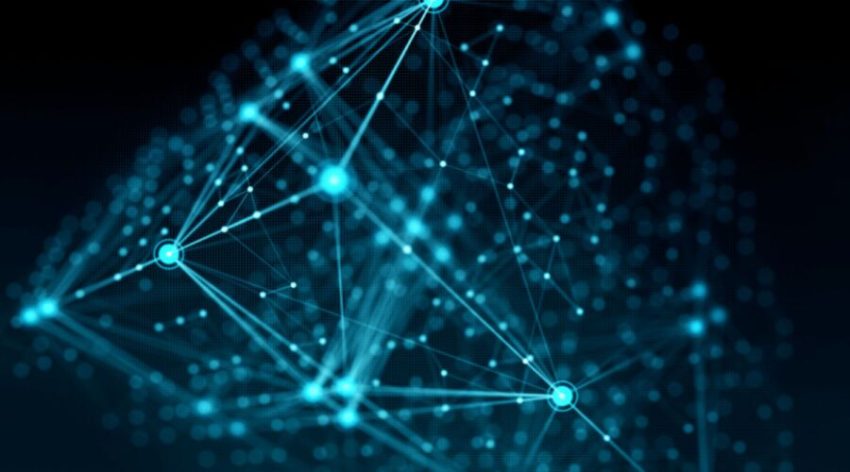In the rapidly evolving landscape of the Internet of Things (IoT), ensuring data integrity and trust is of paramount importance. With the proliferation of interconnected devices and the exponential growth of data generated by IoT systems, traditional methods of data storage and security fall short. However, blockchain technology offers a promising solution to these challenges by providing a decentralized and immutable ledger that ensures data integrity, enhances security, and fosters trust in IoT environments. In this article, we will explore the concept of data integrity in IoT, understand the role of blockchain technology, and delve into various mechanisms and use cases for ensuring data integrity and trust in IoT systems.
Understanding Data Integrity in IoT

What is Data Integrity?
Data integrity refers to the accuracy, consistency, and reliability of data throughout its lifecycle. In the context of IoT, data integrity is crucial as it directly impacts the quality and effectiveness of IoT applications and services. Maintaining data integrity involves ensuring that data remains unaltered, uncorrupted, and authentic from its point of origin to its destination.
Importance of Data Integrity in IoT
Data integrity is vital in IoT environments for several reasons. Firstly, accurate and reliable data is essential for making informed decisions and driving actionable insights. Whether it’s in healthcare, manufacturing, or smart cities, IoT applications heavily rely on high-quality data to deliver value. Secondly, data integrity is crucial for maintaining the integrity of automated processes and systems. Faulty or tampered data can lead to incorrect decisions, system failures, or even safety hazards. Therefore, ensuring data integrity is critical to the successful operation and adoption of IoT technologies.
The Role of Blockchain in Ensuring Data Integrity
What is Blockchain Technology?
Blockchain technology is a distributed ledger that securely records and verifies transactions across multiple nodes in a network. It operates on a decentralized consensus mechanism, where participants collectively validate and agree upon the state of the ledger. Each transaction is cryptographically linked to the previous one, creating an immutable chain of records.
Immutability and Trust in Blockchain
The immutability of blockchain makes it a powerful tool for ensuring data integrity and trust in IoT systems. Once a transaction is recorded on the blockchain, it becomes virtually impossible to modify or tamper with. This characteristic provides a high level of assurance that the data stored on the blockchain remains unchanged and authentic, establishing trust among participants in the IoT ecosystem.
Decentralization and Security
The decentralized nature of blockchain adds another layer of security to IoT data. In traditional centralized systems, data is stored in a single location, making it vulnerable to hacking, data breaches, or unauthorized access. In a blockchain-based decentralized system, data is distributed across multiple nodes, reducing the risk of a single point of failure and enhancing security. Additionally, blockchain employs robust cryptographic algorithms to secure data and ensure the integrity of transactions.
Mechanisms for Ensuring Data Integrity and Trust in IoT
1. Digital Signatures and Hashing
Digital signatures and hashing techniques play a crucial role in ensuring data integrity in IoT. Digital signatures provide a way to verify the authenticity and integrity of data by using cryptographic algorithms. By signing data with a private key and validating it with a corresponding public key, the integrity of the data can be verified, and any tampering can be detected. Hashing, on the other hand, transforms data into a fixed-length alphanumeric string, which serves as a unique identifier for that data. Any modification to the data will result in a different hash value, providing an efficient way to detect tampering.
2. Smart Contracts for Automated Validation
Smart contracts are self-executing contracts with predefined rules and conditions written in code. In IoT systems, smart contracts can be used to automate the validation and verification of data. For example, in a supply chain scenario, a smart contract can automatically verify the authenticity of goods by comparing the data from IoT sensors with predefined criteria. If the data meets the specified conditions, the smart contract can trigger further actions or update the blockchain, ensuring the integrity of the data and establishing trust among stakeholders.
3. Auditing and Transparency
Blockchain’s transparency features enable auditing and accountability in IoT systems. With a blockchain-based data storage solution, every transaction is recorded on the blockchain and can be traced back to its origin. This transparency allows for easy auditing of data, ensuring that it has not been tampered with and providing a clear audit trail for compliance purposes. The ability to audit and verify data enhances trust and accountability in IoT ecosystems.
4. Data Validation and Consensus Mechanisms
Blockchain networks rely on consensus mechanisms to validate and agree upon the state of the ledger. Consensus mechanisms, such as Proof of Work (PoW) or Proof of Stake (PoS), ensure that transactions added to the blockchain are valid and agreed upon by the network participants. This consensus process adds an additional layer of data validation and integrity verification, making it difficult for malicious actors to manipulate the data.
Use Cases for Ensuring Data Integrity and Trust in IoT
1. Supply Chain and Provenance
Supply chain management involves tracking and verifying the origin, authenticity, and movement of goods. Blockchain technology can ensure data integrity in supply chains by securely recording every transaction, ensuring transparency and traceability. With blockchain, stakeholders can verify the provenance of products, track their movement, and detect any unauthorized or fraudulent activities, improving supply chain efficiency and reducing counterfeiting.
2. Healthcare and Medical Records
In the healthcare industry, ensuring the integrity and privacy of patient data is crucial. Blockchain technology can provide a secure and immutable platform for storing medical records and sharing them securely among healthcare providers. By utilizing blockchain, patient data can be securely stored, accessed, and shared, while maintaining data integrity and protecting patient privacy.
3. Energy Grid Management
Blockchain can play a significant role in ensuring data integrity and trust in energy grid management. By securely recording energy production and consumption data from IoT devices, blockchain can enable transparent and accurate billing, optimize energy distribution, and ensure the integrity of energy trading transactions. This level of transparency and trust can drive efficiency and enable the integration of renewable energy sources into the grid.
Privacy and Confidentiality in IoT with Blockchain
1. Privacy Challenges in IoT
Privacy is a significant concern in IoT systems due to the massive amount of personal and sensitive data collected from connected devices. Traditional centralized storage models pose risks to privacy, as a single point of failure can lead to data breaches or unauthorized access. In an IoT environment, where data is generated from diverse sources, maintaining privacy becomes even more challenging.
2. Blockchain for Privacy Protection
Blockchain technology provides privacy-enhancing features that can address privacy challenges in IoT. Techniques like zero-knowledge proofs, homomorphic encryption, and differential privacy can be integrated with blockchain to protect sensitive data. By encrypting data and allowing only authorized parties to access specific information, blockchain can ensure privacy and confidentiality in IoT systems.
3. Decentralized Identity Management
Identity management is crucial for ensuring privacy and controlling data access in IoT. Blockchain-based decentralized identity management solutions enable users to maintain control over their identity and data. With decentralized identity, users can manage their personal information, selectively share data, and authenticate themselves without relying on centralized authorities, reducing the risk of data breaches and identity theft.
Scalability and Performance Considerations
Scalability Challenges in Blockchain for IoT
Scalability is a significant concern when integrating blockchain with IoT, as the sheer volume of data generated by IoT devices can strain the blockchain network. Traditional blockchain networks, like Bitcoin and Ethereum, may face limitations in terms of transaction throughput and latency. To enable the widespread adoption of blockchain in IoT, scalability solutions need to be developed.
Layer 2 Scaling Solutions
Layer 2 scaling solutions offer off-chain mechanisms to improve scalability without compromising security. Techniques such as state channels, sidechains, and off-chain computations allow transactions to be processed outside the main blockchain, reducing congestion and increasing transaction throughput. Layer 2 scaling solutions can enhance the performance of blockchain-based IoT systems by enabling faster transaction processing and reducing transaction costs.
Interoperability for Scalability
Interoperability among different blockchain networks is essential for achieving scalability in IoT. The ability to communicate and exchange data seamlessly across multiple blockchain platforms can unlock the potential for large-scale IoT deployments. Interoperability protocols and frameworks, such as cross-chain bridges and interoperability standards, are being developed to facilitate communication and data flow between diverse blockchain networks.
Energy Efficiency in Blockchain for IoT
Energy Consumption Challenges
Blockchain networks, especially those relying on resource-intensive consensus mechanisms like Proof of Work, can consume substantial amounts of energy. In the context of IoT, where devices are often resource-constrained and battery-powered, energy efficiency is crucial to enable sustainable and long-lasting deployments.
Energy-Efficient Consensus Mechanisms
To address the energy consumption challenges, alternative consensus mechanisms that are more energy-efficient are being explored. Proof of Stake (PoS) and Proof of Authority (PoA) are examples of consensus algorithms that require significantly less energy compared to Proof of Work. These energy-efficient consensus mechanisms can be utilized in IoT blockchain networks to reduce energy consumption while maintaining security and integrity.
Green Blockchain Solutions
In addition to energy-efficient consensus mechanisms, various initiatives aim to develop green blockchain solutions for IoT. These solutions focus on optimizing energy consumption, utilizing renewable energy sources for blockchain mining, and promoting sustainability in blockchain networks. By combining energy-efficient consensus mechanisms with green blockchain practices, IoT deployments can reduce their environmental impact and promote energy sustainability.
Conclusion
Ensuring data integrity and trust is a critical aspect of IoT systems. The decentralized and immutable nature of blockchain technology provides a robust solution for addressing data integrity challenges. By leveraging mechanisms such as digital signatures, smart contracts, and consensus algorithms, blockchain enhances the security and integrity of data in IoT environments. Through various use cases like supply chain management, healthcare, and energy grid management, blockchain is revolutionizing data integrity in the IoT landscape. Embracing blockchain technology will enable organizations to build trustworthy and secure IoT systems that unlock the full potential of this transformative technology.
I have been writing about Bitcoin and other digital currencies for the past two years. I have a strong understanding of the technology behind these assets and how they work. I am also well-versed in the regulatory landscape surrounding them. I have published articles on a variety of topics related to cryptocurrencies, including their price movements, major announcements, and new developments in the space. I have also interviewed some of the leading figures in the industry.

